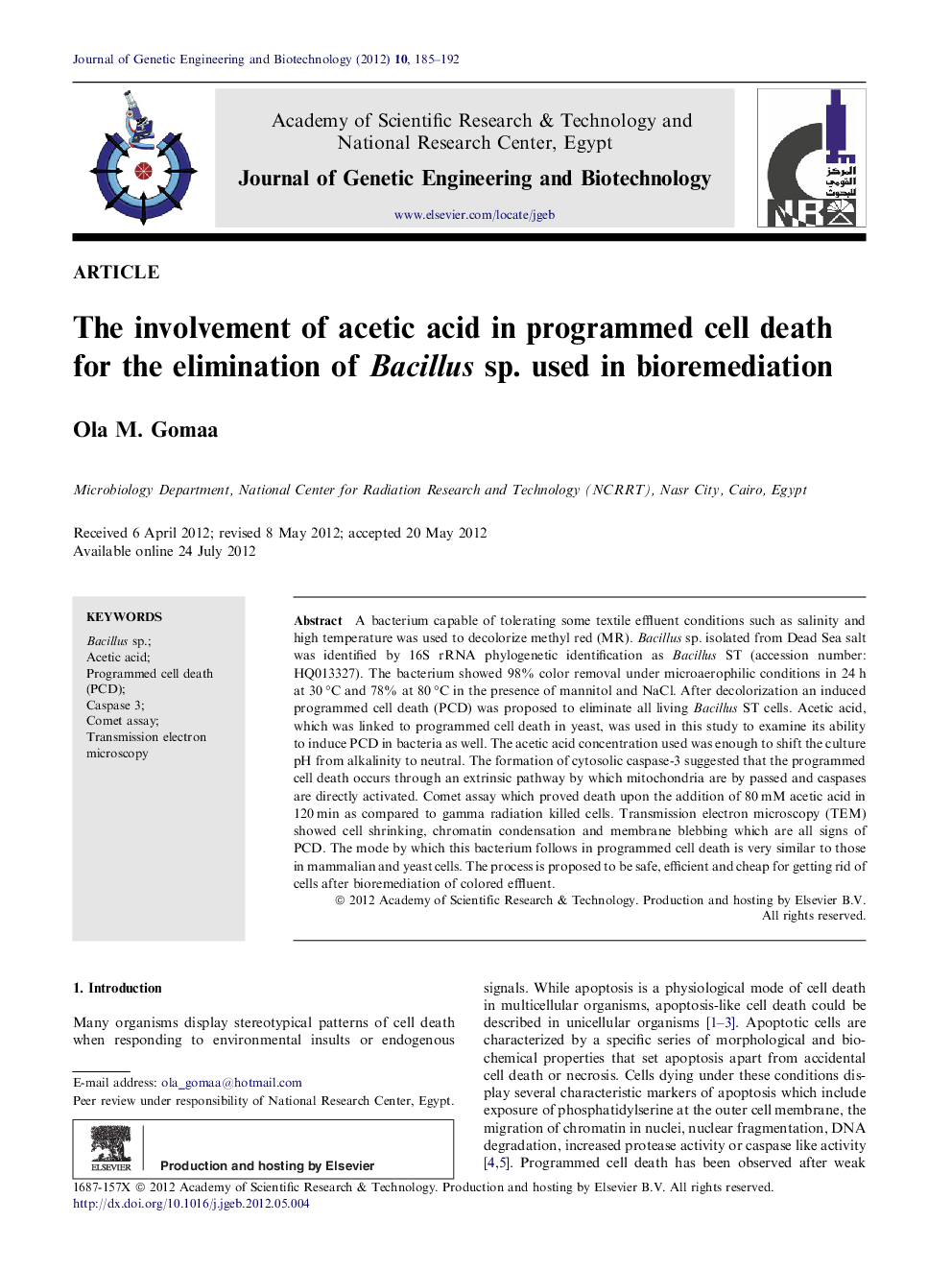| Article ID | Journal | Published Year | Pages | File Type |
|---|---|---|---|---|
| 2087928 | Journal of Genetic Engineering and Biotechnology | 2012 | 8 Pages |
A bacterium capable of tolerating some textile effluent conditions such as salinity and high temperature was used to decolorize methyl red (MR). Bacillus sp. isolated from Dead Sea salt was identified by 16S rRNA phylogenetic identification as Bacillus ST (accession number: HQ013327). The bacterium showed 98% color removal under microaerophilic conditions in 24 h at 30 °C and 78% at 80 °C in the presence of mannitol and NaCl. After decolorization an induced programmed cell death (PCD) was proposed to eliminate all living Bacillus ST cells. Acetic acid, which was linked to programmed cell death in yeast, was used in this study to examine its ability to induce PCD in bacteria as well. The acetic acid concentration used was enough to shift the culture pH from alkalinity to neutral. The formation of cytosolic caspase-3 suggested that the programmed cell death occurs through an extrinsic pathway by which mitochondria are by passed and caspases are directly activated. Comet assay which proved death upon the addition of 80 mM acetic acid in 120 min as compared to gamma radiation killed cells. Transmission electron microscopy (TEM) showed cell shrinking, chromatin condensation and membrane blebbing which are all signs of PCD. The mode by which this bacterium follows in programmed cell death is very similar to those in mammalian and yeast cells. The process is proposed to be safe, efficient and cheap for getting rid of cells after bioremediation of colored effluent.
